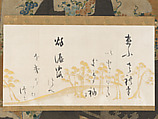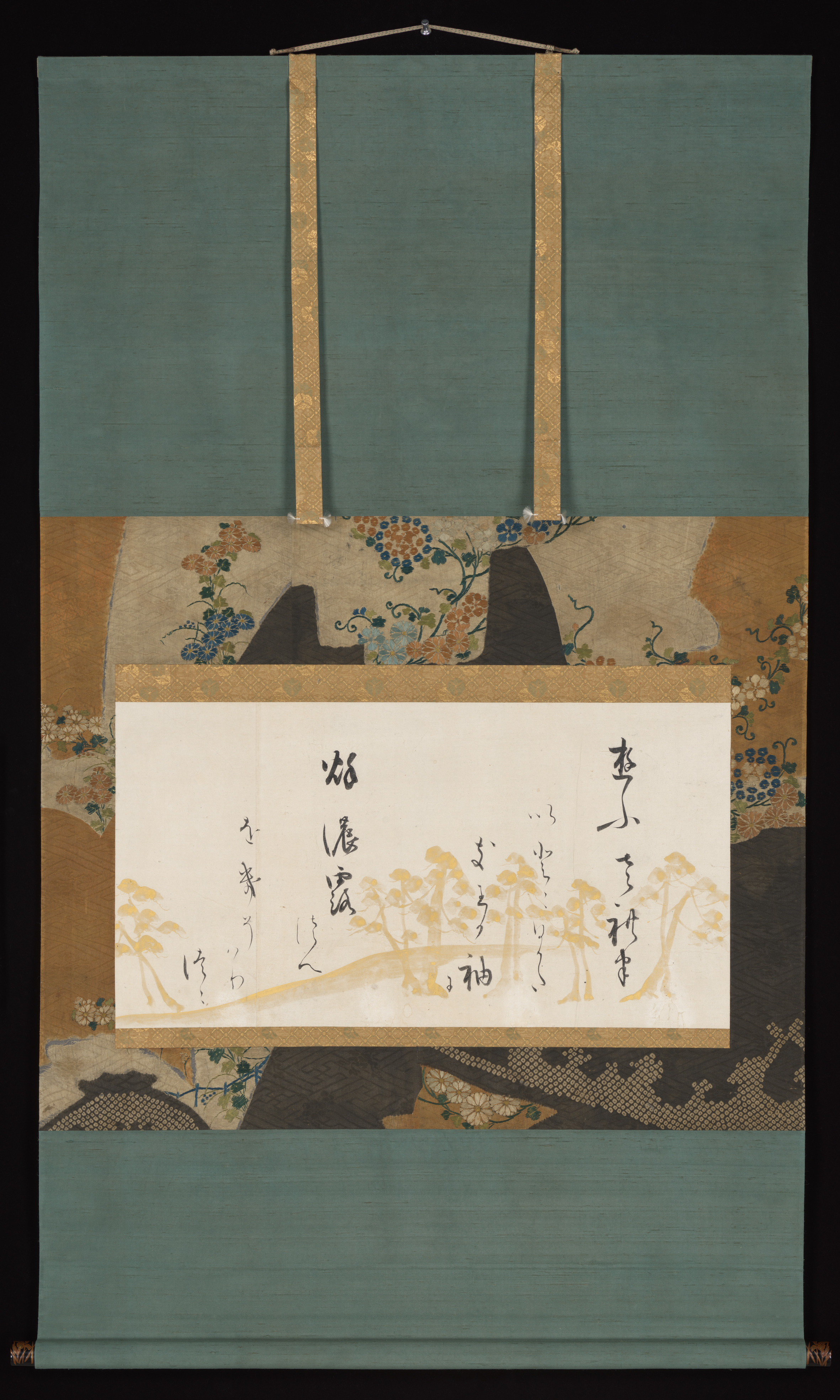Section of a Handscroll with Waka and Underpainting of Pines
Calligrapher Hon'ami Kōetsu 本阿弥光悦 Japanese
Underpainting attributed to Tawaraya Sōtatsu 俵屋宗達 Japanese
Not on view
This detached section of a long poetry handscroll was remounted to serve as a self-sufficient calligraphic composition, with a single complete waka (31-syllable court verse) inscribed atop an abstract landscape of pine trees painted in gold. The calligraphy is in the distinctive style of Hon’ami Kōetsu, rendered in a dynamic yet ever so elegant array of “scattered writing” (chirashigaki) rhythmically composed in nine columns—some long, some comprising but a single character—that playfully regroups the 5-7-5-7-7 syllable structure of the poem into a new composition. The overall balance of this constellation of kanji and kana characters works well, with a focal point of the composition in the cluster of boldly inked characters “aki no tsuyu” 秋の露. These three characters reveal two other trademark features of Kōetsu’s hand. First, he has reversed the two parts of the character aki 秋、so that 火 is on the left, rather than 禾. Second, he has rendered the particle no in a highly cursive form of the phonetically equivalent character nō 濃, in order to make it as prominent as the kanji characters that precede and follow it.
The anonymous poem is from Book 11, “Love,” of the Collection of Poems Ancient and Modern (Kokin wakashū, no. 545), and evokes the imagery of a woman crying into the sleeve of her robe, distraught over lost or unrequited love. It reads:
ゆうされは いとゝひかたき わか袖に
秋の露さへ おきそはりつゝ
Yū sareba
itodo higataki
wa ga sode ni
aki no tsuyu sae
okisawari-tsutsu
As evening descends,
it becomes ever harder
to dry my tear-soaked sleeve,
as the autumn dew
also dampens it drop by drop.
(Trans. John T. Carpenter)
This image cannot be enlarged, viewed at full screen, or downloaded.
This artwork is meant to be viewed from right to left. Scroll left to view more.



